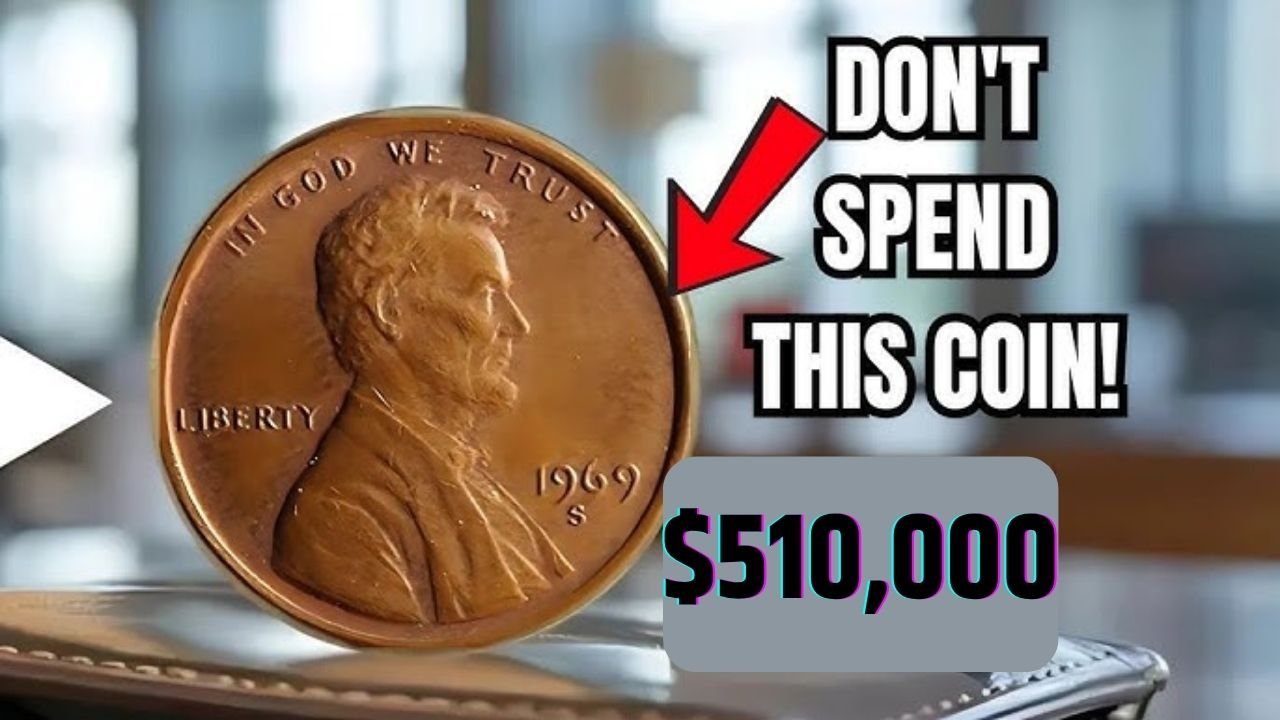Lincoln Penny : Most of us barely glance at the pennies we receive in change, often dismissing them as insignificant. Yet, among these small copper coins lies a potential fortune—the Lincoln Wheat Penny. Some rare versions of this iconic coin can be worth hundreds of thousands of dollars, and a few may still be circulating today, waiting to be discovered by an observant collector.
A Revolutionary Coin in U.S. History
Introduced in 1909, the Lincoln Wheat Penny was a groundbreaking addition to American currency. It was the first U.S. coin to feature a real historical figure—President Abraham Lincoln—instead of a symbolic representation like Lady Liberty. Designed by sculptor Victor David Brenner, the coin was released to commemorate Lincoln’s 100th birthday.
The reverse side of the penny displays two wheat stalks surrounding the words “One Cent” and “United States of America,” earning it the nickname “Wheat Penny.” This design remained in use until 1958 when it was replaced by the Lincoln Memorial design. Despite the change, the Lincoln Wheat Penny remains a beloved piece of numismatic history.
The 1943 Copper Penny: A Rare Wartime Mistake
Among all Lincoln Wheat Pennies, the 1943 copper version stands out as the most valuable. During World War II, copper was in high demand for military supplies, prompting the U.S. Mint to produce pennies from zinc-coated steel instead. However, a small number of copper planchets from 1942 were accidentally used, resulting in a few rare 1943 copper pennies.
Experts believe only about 20 of these coins exist today, making them highly sought after by collectors. In pristine condition, a 1943 copper Lincoln Wheat Penny can sell for as much as $510,000 at auction.
Other Noteworthy Varieties Worth Seeking
While the 1943 copper penny is the most famous, several other Lincoln Wheat Pennies are also highly valuable:
- 1909-S VDB – This San Francisco-minted penny features the designer’s initials (Victor David Brenner) and is highly prized due to its limited mintage.
- 1914-D – Produced in Denver, this coin is rare in good condition and can fetch thousands of dollars.
- 1922 “Plain” – A rare error coin missing its mint mark due to a worn die.
- 1955 Double Die – A striking error that causes doubling in the date and lettering, making it a collector’s favorite.
Each of these coins holds a unique place in numismatic history, representing different eras and minting anomalies.
How to Identify a Valuable Lincoln Wheat Penny
If you’re curious whether your spare change contains a hidden gem, start by checking the date. Key years to look for include 1909, 1914, 1922, 1931, 1943, and 1955. Next, examine the mint mark (found below the date)—coins from San Francisco (“S”) or Denver (“D”) are often more valuable than those from Philadelphia (no mint mark).
For 1943 pennies, the material is crucial. Most were made of steel and appear silver-gray. If you find a copper-colored 1943 penny, test it with a magnet—steel pennies will stick, but copper ones won’t. If it doesn’t stick, you may have an extremely rare and valuable coin.
Preserving Your Coin’s Value
If you suspect you’ve found a rare Lincoln Wheat Penny, avoid cleaning it. Collectors prefer coins in their original condition, as cleaning can drastically reduce their worth. Handle the coin carefully by its edges to prevent damage.
For authentication, consider sending it to a professional grading service like PCGS (Professional Coin Grading Service) or NGC (Numismatic Guaranty Corporation). These services verify authenticity, assess condition, and encapsulate the coin in a protective case, increasing its market value.
Why Coin Collecting Still Matters
The Lincoln Wheat Penny is more than just currency—it’s a piece of American history. These coins have passed through countless hands, witnessing major events like World Wars, economic booms, and cultural shifts. Collectors don’t just see metal; they see stories, craftsmanship, and historical significance.
What makes this hobby thrilling is the possibility of discovery. Unlike museum artifacts, rare coins can still be found in everyday transactions, old piggy banks, or inherited collections. All it takes is a little knowledge and a keen eye to uncover a hidden treasure.
Frequently Asked Questions
1. What makes the 1943 copper penny so valuable?
Most 1943 pennies were made of steel due to wartime copper shortages. The few mistakenly struck in copper are extremely rare, driving their value up to $510,000.
2. Where can I find Lincoln Wheat Pennies?
They occasionally turn up in circulation, coin rolls, estate sales, or old collections. Checking your spare change could lead to a surprising find.
3. How can I tell if my penny is valuable?
Look for key dates, mint marks, and material (especially for 1943 pennies). A magnet test can help identify steel vs. copper coins.
4. Should I clean an old penny?
No—cleaning can damage the coin and reduce its value. Collectors prefer original, untouched coins.
5. Where should I sell a rare Lincoln Wheat Penny?
For the best price, have it professionally graded and then sell through reputable auction houses, coin dealers, or online marketplaces.
Final Thoughts: A Small Coin with Big Potential
The Lincoln Wheat Penny is a reminder that extraordinary treasures can hide in plain sight. Whether you’re a seasoned collector or simply curious, taking a moment to examine your coins could lead to an incredible discovery. Who knows? The next penny in your pocket might just be worth a fortune.
